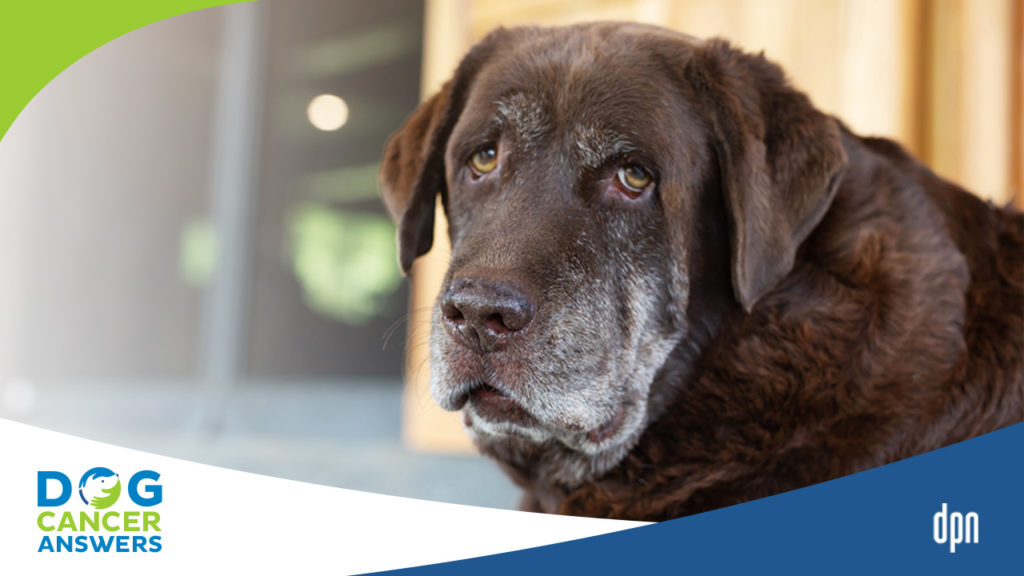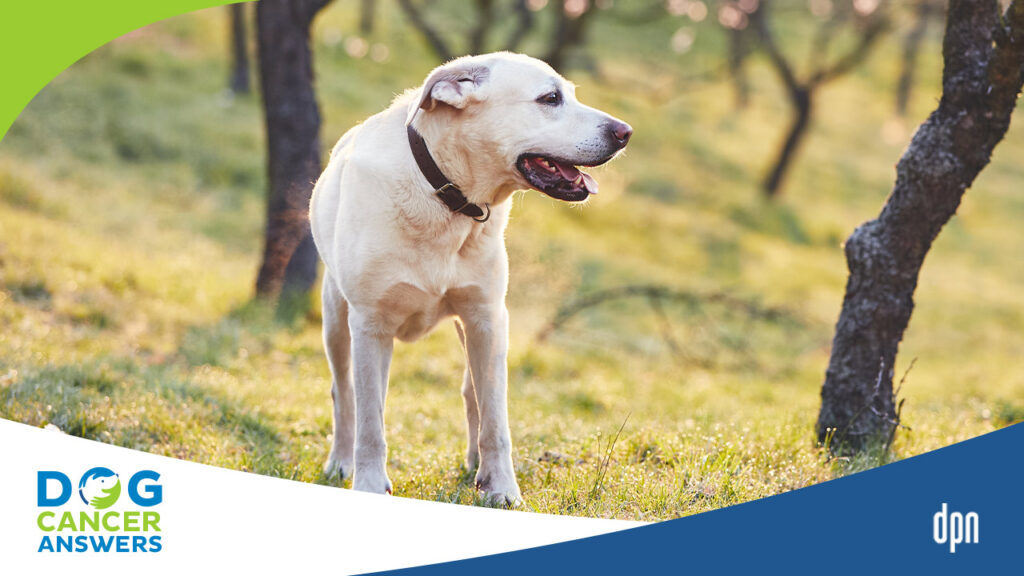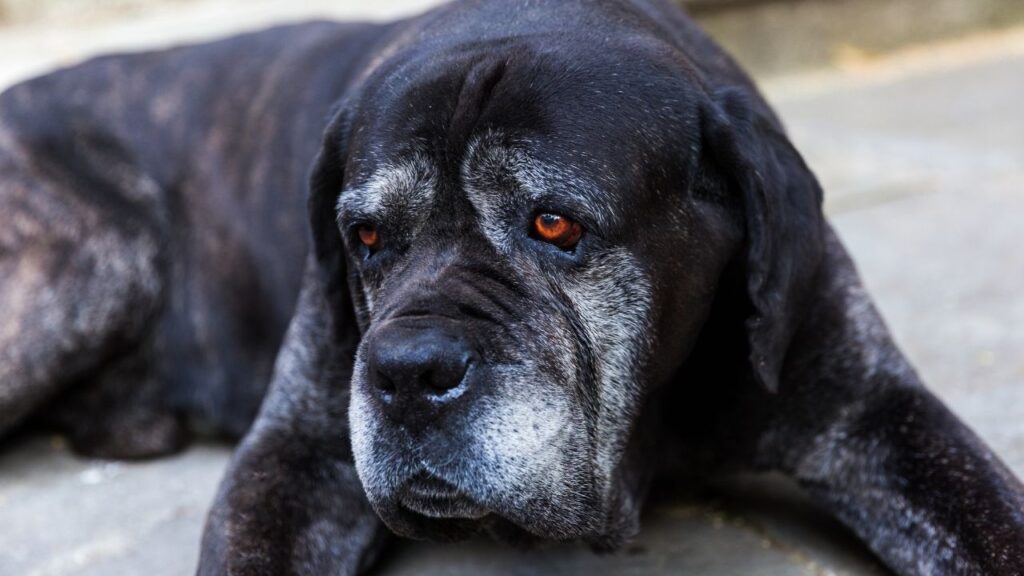Oral melanoma is a locally aggressive and highly metastatic cancer, but prompt treatment can lead to better survival times and there are new and exciting treatments on the horizon.
Key Takeaways
- With no treatment, the prognosis for oral melanoma is poor, with most dog lovers choosing to euthanize after about 2 months.
- With treatment, the prognosis is better, up to two years depending upon the stage of illness and the treatments used.
- Like all aggressive cancers, oral melanoma that has metastasized is not considered “curable.” However, it is treatable, and good life quality can be regained for many dogs.
- Oral melanomas, like all mouth cancers, are painful. Tumors that may show as small bumps on the surface might be quite deep and involved. Dog lovers often notice something is wrong when they see their dogs pawing at their mouth in pain.
- Oral melanomas are highly metastatic, meaning they spread to other parts of the body, such as lymph nodes, bones, lungs, liver, and kidneys.
- Spread is often already present at the time of diagnosis, making oral melanoma a very aggressive illness.
- Unfortunately, you might not notice the spread yourself, because it doesn’t usually have symptoms involved. A full workup will reveal the spread in tests and imaging.
About Oral Melanoma
Melanoma is the most common oral tumor in dogs. Also called melanocytic tumor, it is a malignant tumor of the melanocytes (a specific type of skin cell that makes the pigment melanin).
Because melanocytes can be found in skin tissues, melanomas are also found elsewhere in and on the body, but in this article, we focus on the oral type.
Locally Invasive and Highly Metastatic
Oral melanomas are locally invasive and highly metastatic. Locally invasive means they grow rapidly into the surrounding tissues. Metastatic means they go to distant sites in the body.
They can spread to nearby lymph nodes, the mouth and jaw bones, the lungs, the liver, and the kidneys.
Where Oral Melanomas are Usually Located
Oral melanomas typically first appear on the gums, lips, roof of the mouth, and/or the tongue. They may appear pigmented black or be the normal pink color of the mucosa of the mouth.
Stats and Facts About Oral Melanoma
Unfortunately, oral melanomas are extremely aggressive, and most are ultimately fatal.1,2 That said, good treatments are available, and dogs experience a good quality of life during those treatments.
The goal is to gain longevity and life quality, not cure, and it is worth considering all your many options. Here are some things to keep in mind:
- 30-40% of all oral tumors are melanomas 3
- Up to 80% of dogs with oral melanomas develop metastatic disease (mostly to the lymph nodes and lungs) 3
- 38% of dogs with oral melanoma have metastatic lesions to the central nervous system (brain and spinal cord) 4
- The average age at the time of diagnosis is 11.4 years 5
Veterinary oncologist Dr. Sue Ettinger and Dr. Demian Dressler discuss oral melanoma on DOG CANCER ANSWERS.
What Causes Oral Melanoma?
There are no known causes specific to oral melanoma at this time.
However, there are theories that trauma, chemical exposure, hormones, and genetics may play a role in its development.2
Risk Factors for Oral Melanoma
Any dog can develop oral melanomas; however, some breeds are more likely:2,3,6
- Cocker Spaniel
- German Shepherd Dog
- German Shorthaired Pointer
- Golden Retriever
- Gordon Setter
- Miniature Poodle
- Chow Chow
- Boxer
Symptoms of Oral Melanoma
Dogs are often diagnosed with oral melanoma during routine oral care (dental cleanings) or a wellness exam. In these cases, owners often haven’t seen any changes in their dogs that would have indicated a problem.
Sometimes, owners do notice symptoms and bring their dog in for an exam as a result. Possible symptoms of oral melanoma include:6
- If the tumor is toward the front of the mouth, you might see it
- Bad breath
- Excessive drooling
- Difficulty eating or swallowing
- Pain while eating
- Reluctance to eat
- Pawing at the mouth
- Bleeding from the mouth
- Tooth loss
- Weight loss
How Oral Melanoma is Diagnosed
Many dogs are diagnosed after teeth cleaning because veterinarians can see the entire mouth during that procedure. They will often take a sample of a suspicious area to send out for biopsy.
A biopsy is the preferred method of diagnosis since melanomas can mimic many other tumor types, and special stains and a pathologist’s opinion are often required.
Your veterinarian may also take a small tumor sample via a fine needle aspirate, although this may not provide enough information for a definitive diagnosis.
Any oral mass must be biopsied because you cannot tell which oral masses are malignant just by looking at them.3
Staging for Oral Melanoma
Staging is finding out where a tumor is located and the severity of the case. Because oral melanoma is often both locally invasive and highly metastatic, the full workup includes many tests that look for spread.
The reasoning behind this is simple: knowing if there is spread and how much there is, you can make confident treatment choices.
Staging for oral melanoma may involve:1,3,6,7
- Labwork to assess general health (bloodwork and sometimes urinalysis)
- Chest X-rays or a CT scan to look for spread
- Abdominal ultrasound to look for spread
- Lymph node aspirates or biopsies to look for spread
Swollen lymph nodes are always alarming, but it does not necessarily mean oral melanoma has spread. That is why lymph nodes should be aspirated or biopsied, to determine if the cancer has spread.7
A CT scan is also recommended to evaluate how aggressive the tumor is in the mouth and nearby areas to look for local invasion.
Based on these test results, your veterinarian will give you the stage of your dog’s oral melanoma:1,3,6
Stage I Oral Melanoma: the primary tumor is smaller than 2cm (about 0.79 in) in diameter and has not spread.
Stage II Oral Melanoma: the primary tumor is 2-4cm (about 0.79 inch to about 1.57 inch) in diameter and has not spread.
Stage III Oral Melanoma: the primary tumor is greater than 4cm (about half the length of the long edge of a credit card) in diameter and may or may not have spread to the lymph nodes.
Stage IV Oral Melanoma: the primary tumor is any size, and there is evidence of spread of the tumor to other parts of the body.
The prognosis, or best guess as to how the disease will progress and respond to treatment, depends on the size of the mass, the treatment methods, and whether the tumor has already spread to other parts of the body.3
- Without any treatment at all, the prognosis is extremely poor. Many dog lovers elect euthanasia for their dogs after approximately two months.
- The best prognosis is found if the melanoma is Stage I and surgery is performed with clean margins (survival time is approximately 17 months).1
- With radical surgery and wide margins (see below), the median survival time is 8-10 months.1
- With radiation therapy alone, the median survival time ranges from 5.3 to 11.9 months. 5
- Chemotherapy has not been found to increase survival times significantly. 5
Surgery, Radiation, and Chemotherapy Treatments for Oral Melanomas
As aggressive as oral melanomas are, they are usually responsive to treatment. Dogs do better if:
- The tumor is caught early
- The tumor is smaller
- The treatment is very aggressive
What qualifies as an aggressive treatment?
- Surgery is considered the most important part of treatment for most dogs.
- Surgery followed by radiation therapy and immunotherapy (the melanoma vaccine) is typically the most aggressive and successful treatment course.
- However, each dog and each cancer and each family is different, and choices must be made based on what is right for them.
In general, treating cancer in dogs is not usually about “curing” the cancer, but instead about improving and maintaining a good quality of life while hopefully extending the dog’s life.
This is certainly true for oral melanoma. Let’s review the typical treatments you’ll be offered now.
Surgery
The most critical part of treatment is the surgical removal of the tumor. The goal is wide margins (ideally greater than 2cm, including through bones of the jaw), and removing any lymph nodes containing cancerous cells. 5
This can be a very extensive surgery; not every general practice veterinarian will feel comfortable performing it. It may require going to a specialty surgical center.
While amputating (removing) the jaw seems extreme, most owners are satisfied with the surgery.
- Oral tumors can really hurt, so when they are gone, dogs may feel better.
- Owners report that their dogs still eat well and are more comfortable after the surgery.12
The median survival time after surgical jaw removal is 8-10 months.8
If a more conservative approach to surgery is taken, there is a much greater risk of tumor regrowth.
Radiation
Radiation therapy can also be an important part of treatment for dogs with oral melanomas.
- Radiation therapy can be used alone or in conjunction with surgery and/or chemotherapy.12
- The overall response rate is 82-94%; however, these statistics include both partial and complete responses.
- There is a local recurrence rate of 11-27% and the median survival time is 5.3-11.9 months.5
There are many proposed protocols for radiation therapy to treat oral melanomas. The most traditional approach recommends daily treatment for 18 weekdays, straight.
However, the 18-day protocol may lead to more acute side effects (corneal ulcers, skin irritation, irritation of the mucous membranes of the mouth, etc.), so a hypo-fractionated course is often recommended.
With hypo-fractionated radiation, fewer treatments are given, but the dose per treatment is higher. This may cause fewer short-term side effects but risks more long-term side effects like bone damage, nerve damage, and others.12
Immunotherapy Specifically for Oral Melanoma
Investigations have examined using the body’s immune system to find and destroy cancer.
Dogs with melanoma may benefit from treatment with Corynebacterium parvum, a type of bacteria that is used as a non-specific (meaning not specifically aimed at oral melanoma) immunotherapy to boost the immune system of patients with cancer.13
Reovirus is an RNA virus also being studied in human and canine oncology. It has been shown to induce cell death in many tumor types, including melanoma.14
Gene therapy is also being researched as an approach for both canine and human melanoma alongside surgery. It has yielded promising results but is not widely available outside of a research setting.15
One other immunotherapy specific to dogs with oral melanoma is the melanoma vaccine called ONCEPT.
Veterinary oncologist Dr. Brooke Britton discusses the ONCEPT vaccine and early treatment for oral melanoma on DOG CANCER ANSWERS.
ONCEPT, “the Melanoma Vaccine”
Vaccines are typically used to prevent disease; however, this vaccine treats melanoma in dogs. ONCEPT® is recommended for dogs diagnosed with advanced melanoma who have already had surgery or radiation to treat the original tumor. It is used to control metastatic disease.
In general:16,17,18
- The vaccine is made with human tyrosinase, which stimulates the dog’s immune system to attack melanoma cells (which contain a similar tyrosinase protein).
- This vaccine is very safe with minimal side effects.
- Some dogs have a mild skin reaction at the vaccination site, a little soreness, or a mild fever.
- ONCEPT is currently only available through veterinary oncologists.
ONCEPT is a needle-free, transdermal (through the skin) vaccine that is given every two weeks for four doses, with a booster every six months (or as scheduled by your oncologist) thereafter.
Some studies have shown it to increase survival time, while others have shown no improvement.21
Chemotherapy for Oral Melanomas
Chemotherapy is not typically used as a standalone therapy for oral melanoma. Instead, it is recommended to be given alongside other more effective treatments such as radiation therapy and/or surgery.6,9
While there is a lack of evidence to support chemotherapy as an effective treatment for oral melanoma, veterinary oncologists may still recommend a course depending upon the case, typically injectable carboplatin every three weeks.9
There is some evidence using toceranib phosphate (Palladia) alongside carboplatin may be helpful, as well.22
There may also be a place for metronomic chemotherapy in treating oral melanoma. Veterinary oncologists are working out protocols and investigating its promise; your oncologist will have the most up-to-date information on this.
Cisplatin and masitinib have also been studied for efficacy against oral melanoma, with only minimal response.5,10,11
Electrochemotherapy
Electrochemotherapy has also been studied as a treatment method for oral melanoma. However, an ideal protocol is not yet established.
In electrochemotherapy, a chemotherapy drug that typically does not get into the cancer cells well is paired with electric pulses aimed directly into the tumor. This allows the chemotherapy drug, usually bleomycin or cisplatin, to enter the cancer cells. The response rate is similar to that of radiation therapy. However, more research is still needed to determine the specifics of the treatment. 11
Even though chemotherapy is used in this treatment, it is not absorbed systemically. It’s a local treatment and better considered an alternative to radiation based on our current understanding.
Dietary Considerations
Many dogs with oral melanoma will benefit from a soft diet since oral tumors can cause discomfort while eating. There is no current “official” dog cancer diet, but there are many articles on diet on this site.
Supplements
No supplement specifically targets oral melanoma, but our site has many articles on supplements.
Always consult your veterinarian before adding a supplement to ensure that it is a good fit for your dog and won’t interfere with any of her medications or treatments.
Integrative Therapies
One small study of 11 dogs found that Lupeol, a naturally occurring chemical in certain fruits and vegetables, decreased the rate of recurrence and increased survival time in dogs who had surgery to remove oral melanoma. No adverse reactions were found in this study.19
A case study was published in which a dog with oral melanoma was treated with Lupeol injections, hyperthermia treatments, and cultured dendritic cells and interleukin-12 injections. The dog had a very good quality of life and showed no recurrence or evidence of metastasis six months after treatment. This was only one dog, but more research should be done to see if this treatment strategy could work for other dogs.20
Oral Melanoma Research Trials for Dogs
We will update this article with links to clinical trials as they become available.
What the End of Life Looks Like for Dogs with Oral Melanoma
Even though there are many treatment options available, sadly, oral melanoma is often fatal. As the disease progresses, dogs may have difficulty eating as the tumor grows or refuse to eat if the tumor is causing pain.
The tumors may bleed and be prone to infection, making dogs feel unwell. Dogs may have trouble breathing if the melanoma spreads to the lungs or starts to block the airways.
These are all signs of diminishing quality of life and should be assessed by your dog’s veterinarian for hospice care.
Prevention Strategies
Check your dog’s mouth regularly! We know that the smaller the tumor is when it is diagnosed, the better the outcomes can be. Any mass found in your dog’s mouth should be evaluated immediately so treatments can be most effective.
Daily toothbrushing and regular veterinary dental cleanings is also a good idea.
As research into a preventative vaccine for dog cancer continues in the VACCS trial, we may eventually find it helps oral melanoma.
Dr. Nancy Reese helps a listener understand her dog's prognosis in this episode of DOG CANCER ANSWERS.
- Bergman PJ. Canine Oral Melanoma. Clinical Techniques in Small Animal Practice. 2007;22(2):55-60. doi:10.1053/j.ctsap.2007.03.004
- Modiano JF, Ritt MG, Wojcieszyn J. The molecular basis of canine melanoma: pathogenesis and trends in diagnosis and therapy. J Vet Intern Med. 1999;13(3):163-174. doi:10.1892/0891-6640(1999)013<0163:tmbocm>2.3.co;2
- Oral Melanomas in Dogs | Atlantic Veterinary Internal Medicine. Atlantic Veterinary Internal Medicine & Oncology. Published February 12, 2021. Accessed November 17, 2022. https://avim.us/oral-melanomas-in-dogs/
- Razmara AM, Wittenburg LA, Al-Nadaf S, Toedebusch RG, Meyers FJ, Toedebusch CM. Prevalence and Clinicopathologic Features of Canine Metastatic Melanoma Involving the Central Nervous System: A Retrospective Analysis and Comparative Review. Front Oncol. 2022;12:868004. Published 2022 May 27. doi:10.3389/fonc.2022.868004
- Nishiya AT, Massoco CO, Felizzola CR, Perlmann E, Batschinski K, Tedardi MV, Garcia JS, Mendonça PP, Teixeira TF, Zaidan Dagli ML. Comparative Aspects of Canine Melanoma. Vet Sci. 2016 Feb 19;3(1):7. doi: 10.3390/vetsci3010007. PMID: 29056717; PMCID: PMC5644618.
- Medical Oncology: Canine Oral Melanoma. North Carolina State Veterinary Hospital. https://hospital.cvm.ncsu.edu/services/small-animals/cancer-oncology/oncology/canine-oral-melanoma/
- Williams LE, Packer RA. Association between lymph node size and metastasis in dogs with oral malignant melanoma: 100 cases (1987-2001). J Am Vet Med Assoc. 2003;222(9):1234-1236. doi:10.2460/javma.2003.222.1234
- Fox LE, Geoghegan SL, Davis LH, Hartzel JS, Kubilis P, Gruber LA. Owner satisfaction with partial mandibulectomy or maxillectomy for treatment of oral tumors in 27 dogs. J Am Anim Hosp Assoc. 1997;33(1):25-31. doi:10.5326/15473317-33-1-25
- Rassnick KM, Ruslander DM, Cotter SM, et al. Use of carboplatin for treatment of dogs with malignant melanoma: 27 cases (1989-2000). J Am Vet Med Assoc. 2001;218(9):1444-1448. doi:10.2460/javma.2001.218.1444
- Giuliano, A. and Dobson, J. (2020), Prospective clinical trial of masitinib mesylate treatment for advanced stage III and IV canine malignant melanoma. J Small Anim Pract, 61: 190-194. https://doi.org/10.1111/jsap.13111
- Pazzi P, Steenkamp G, Rixon AJ. Treatment of Canine Oral Melanomas: A Critical Review of the Literature. Vet Sci. 2022;9(5):196. Published 2022 Apr 19. doi:10.3390/vetsci9050196
- Bergman PJ, Kent MS, Farese JP. Melanoma. In: Withrow SJ, Vail DM, Thamm DH, Liptak JM. Withrow & Macewen’s Small Animal Clinical Oncology. WBSaunders; 2020.
- MacEwen EG, Patnaik AK, Harvey HJ, Hayes AA, Matus R. Canine oral melanoma: comparison of surgery versus surgery plus Corynebacterium parvum. Cancer Invest. 1986;4(5):397-402. doi:10.3109/07357908609017520
- Igase M, Hwang CC, Coffey M, Okuda M, Noguchi S, Mizuno T. The oncolytic effects of reovirus in canine solid tumor cell lines. J Vet Med Sci. 2015;77(5):541-548. doi:10.1292/jvms.14-0570
- Finocchiaro LM, Fondello C, Gil-Cardeza ML, et al. Cytokine-Enhanced Vaccine and Interferon-β plus Suicide Gene Therapy as Surgery Adjuvant Treatments for Spontaneous Canine Melanoma. Hum Gene Ther. 2015;26(6):367-376. doi:10.1089/hum.2014.130
- Petcancervaccine.com. Published 2022. Accessed November 23, 2022. https://petcancervaccine.com/vaccine/works
- Bergman PJ, McKnight J, Novosad A, et al. Long-term survival of dogs with advanced malignant melanoma after DNA vaccination with xenogeneic human tyrosinase: a phase I trial. Clin Cancer Res. 2003;9(4):1284-1290.
- Bergman PJ, Camps-Palau MA, McKnight JA, et al. Development of a xenogeneic DNA vaccine program for canine malignant melanoma at the Animal Medical Center. Vaccine. 2006;24(21):4582-4585. doi:10.1016/j.vaccine.2005.08.027
- Yokoe I, Azuma K, Hata K, et al. Clinical systemic lupeol administration for canine oral malignant melanoma. Molecular and Clinical Oncology. 2014;3(1):89-92. doi:10.3892/mco.2014.450
- Itoh H, Mukaiyama T, Goto T, et al. Non-surgical treatment of canine oral malignant melanoma: A case study of the application of complementary alternative medicine. Oncol Lett. 2014;7(6):1829-1830. doi:10.3892/ol.2014.2041
- 1. Ottnod JM, Smedley RC, Walshaw R, Hauptman JG, Kiupel M, Obradovich JE. A retrospective analysis of the efficacy of Oncept vaccine for the adjunct treatment of canine oral malignant melanoma. Veterinary and Comparative Oncology. September 2013.
- 1. Wouda ML, Hocker SE, Higginbotham ML. Safety evaluation of combination carboplatin and toceranib phosphate (Palladia) in tumour-bearing dogs: A phase I dose finding study. Veterinary and Comparative Oncology. March 2018.
ONCEPT® is a trademark of Boehringer Ingelheim Animal Health
Topics
Did You Find This Helpful? Share It with Your Pack!
Use the buttons to share what you learned on social media, download a PDF, print this out, or email it to your veterinarian.









